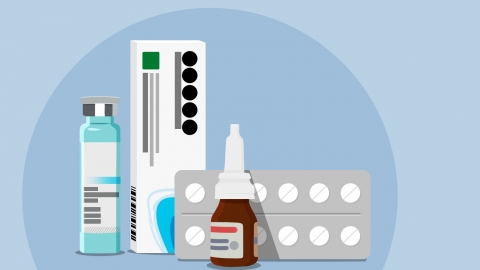Why does low-grade fever occur during the decompensation stage of liver dysfunction?
Generally, there are multiple causes for the occurrence of low-grade fever during the decompensated stage of liver dysfunction. These include hepatocyte necrosis, endotoxemia, concurrent primary liver cancer with cirrhosis, reduced inactivation of certain substances by the liver, and concurrent infections. A detailed analysis is as follows:

1. Hepatocyte Necrosis
In the decompensated stage of liver function, liver cells are severely damaged and some undergo necrosis. The decomposition and absorption of proteins and their metabolites generate pyrogens, leading to elevated body temperature. Under a physician's guidance, medications such as glycyrrhizin capsules, hepatocyte growth-promoting agent injection, and compound glycyrrhizic acid ammonium injection may be used for treatment.
2. Endotoxemia
In patients with cirrhosis, the function of the hepatic mononuclear-phagocyte system declines, resulting in reduced clearance of enterogenic endotoxins. Endotoxins activate mononuclear macrophages to produce tumor necrosis factor and interleukins, causing fever. As directed by a physician, medications such as amoxicillin capsules, cefradine capsules, and cyclosporine capsules may be used for treatment.
3. Cirrhosis Complicated with Primary Liver Cancer
Cirrhosis is a high-risk factor for liver cancer, with over 80% of primary liver cancers developing on a background of cirrhosis. Liver cancer cells themselves can produce pyrogens, leading to elevated body temperature. Under a physician's guidance, medications such as ibuprofen suspension, acetaminophen tablets, and cefixime dispersible tablets may be used to treat symptoms, and surgery may be necessary in some cases.
4. Reduced Inactivation of Certain Substances by the Liver
During the decompensated stage of liver function, the liver's ability to inactivate certain substances—such as estrogen and intermediate metabolites of bile acids—is weakened. These substances can accumulate in the body and act as pyrogens. Under a physician's guidance, traditional Chinese medicines such as Xiaochaihu granules, Yinzhilan oral liquid, and Jiwei Qianghuo granules may be used to alleviate symptoms and reduce fever.
5. Concurrent Infections
Patients in the decompensated stage of liver function have weakened immunity and are prone to various infections, such as pulmonary or urinary tract infections. These infections produce pyrogens, leading to elevated body temperature. For concurrent infections, antiviral or antibiotic medications such as ribavirin buccal tablets, itraconazole hydrochloride capsules, and cephalexin and trimethoprim tablets may be used under a physician's guidance.
In addition to addressing the specific causes mentioned above, comprehensive measures should also be taken, including maintaining a balanced diet, adequate nutrition, moderate exercise, strengthening physical health, and regulating emotions, to improve liver function, enhance immune function, and reduce the occurrence of low-grade fever.
References:
[1] Xu Tingting. Clinical Characteristics and Risk Factor Analysis of Infections Complicating Liver Cirrhosis in the Decompensated Stage of Liver Function [D]. Jilin University, 2012.
[2] Li Yuanbo, Liu Fangting. Analysis of the Impact of Nucleoside and Nucleotide Analogue Therapy on Liver Function in Patients with Hepatitis B Cirrhosis During the Decompensated Stage [J]. Electronic Journal of Clinical Medical Literature, 2019, 6(52): 181-182.




